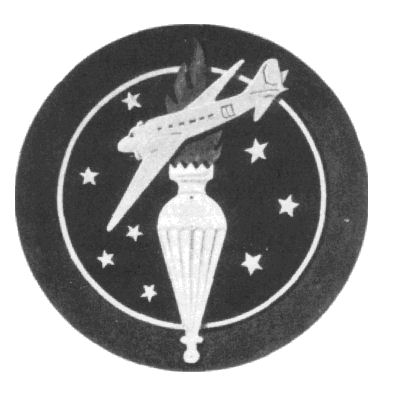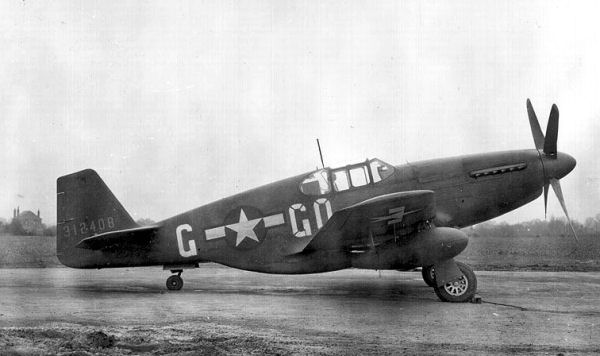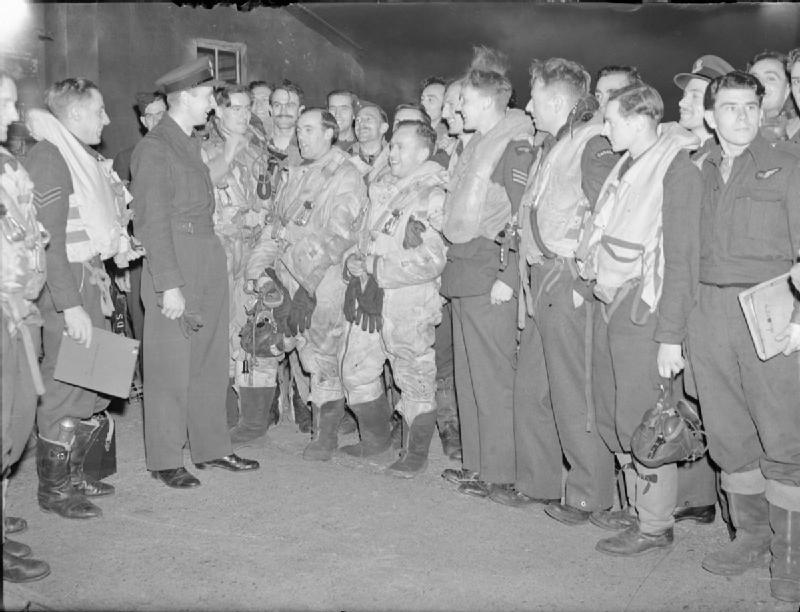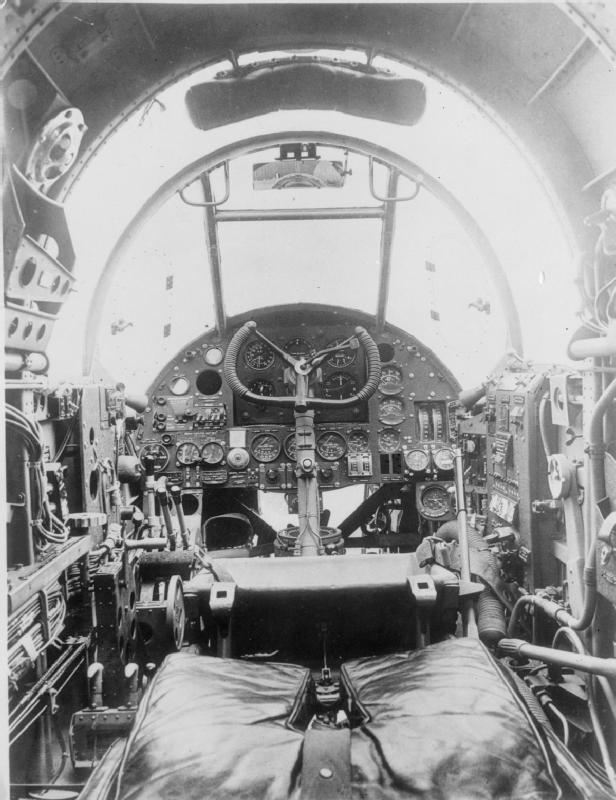|
RAF Balderton
Royal Air Force Balderton or more simply RAF Balderton was a former Royal Air Force station located south of Newark-on-Trent, sandwiched between the now extinct Great Northern Railway (GNR) Bottesford-Newark line and the A1 road in Nottinghamshire, England. Balderton airfield opened in June 1941 with a grass surface over stiff clay, it was used by the Royal Air Force (RAF), Royal Canadian Air Force (RCAF) and United States Army Air Forces (USAAF). During the Second World War it was used primarily as a troop carrier transport airfield and after for munitions storage before it finally closed. A notice in The Times for 20 May 1957 lists the airfield as one of those no longer needed by the RAF. The airfield was built to a dispersed plan. By 1943 the airfield had tarmac landing areas with three intersecting runways and 50 hard standings suitable for Heavy Bombers. In 1944 it was used by Bomber Command's 5 Group. There were two T-2 aircraft hangars, two Glider hangars and one B ... [...More Info...] [...Related Items...] OR: [Wikipedia] [Google] [Baidu] |
Ensign Of The Royal Air Force
An ensign is the national flag flown on a vessel to indicate nationality. The ensign is the largest flag, generally flown at the stern (rear) of the ship while in port. The naval ensign (also known as war ensign), used on warships, may be different from the civil ensign (merchant ships) or the yacht ensign (recreational boats). Large versions of naval ensigns called battle ensigns are used when a warship goes into battle. The ensign differs from the jack (flag), jack, which is flown from a jackstaff at the bow of a vessel. In its widest sense, an ensign is just a flag or other standard. The European military rank of Ensign (rank), ensign, once responsible for bearing a unit's standard (whether national or regimental), derives from it (in the cavalry, the equivalent rank was Cornet (rank), cornet, named after a type of flag). Ensigns, such as the ancient Roman ensigns in the Arch of Constantine, are not always flags. National ensigns In nautical use, the ensign is flown on a shi ... [...More Info...] [...Related Items...] OR: [Wikipedia] [Google] [Baidu] |
England
England is a country that is part of the United Kingdom. It shares land borders with Wales to its west and Scotland to its north. The Irish Sea lies northwest and the Celtic Sea to the southwest. It is separated from continental Europe by the North Sea to the east and the English Channel to the south. The country covers five-eighths of the island of Great Britain, which lies in the North Atlantic, and includes over 100 smaller islands, such as the Isles of Scilly and the Isle of Wight. The area now called England was first inhabited by modern humans during the Upper Paleolithic period, but takes its name from the Angles, a Germanic tribe deriving its name from the Anglia peninsula, who settled during the 5th and 6th centuries. England became a unified state in the 10th century and has had a significant cultural and legal impact on the wider world since the Age of Discovery, which began during the 15th century. The English language, the Anglican Church, and Engli ... [...More Info...] [...Related Items...] OR: [Wikipedia] [Google] [Baidu] |
53d Troop Carrier Wing (World War II)
The 53d Fighter Wing (53 FW) is a disbanded unit of the United States Air Force, last stationed at Philadelphia International Airport, Pennsylvania. It was withdrawn from the Pennsylvania Air National Guard (PA ANG) and inactivated on 31 October 1950. The wing was first formed as the 53d Troop Carrier Wing during World War II for command of glider and troop carrier units and its components were heavily involved in airborne operations in North-West Europe from the Normandy Landings to the crossing of the River Rhine. This wing is not related to the 53d Wing located at Eglin Air Force Base, Florida or that wing's predecessor units, the 53d Fighter Group and the USAF Tactical Air Warfare Center. History World War II The wing was formed as a World War II command and control organization for newly organized troop carrier groups and glider units being trained for overseas deployment to combat theaters. It deployed to England in 1944 and its units subsequently engaged in combat operati ... [...More Info...] [...Related Items...] OR: [Wikipedia] [Google] [Baidu] |
Indiana
Indiana () is a U.S. state in the Midwestern United States. It is the 38th-largest by area and the 17th-most populous of the 50 States. Its capital and largest city is Indianapolis. Indiana was admitted to the United States as the 19th state on December 11, 1816. It is bordered by Lake Michigan to the northwest, Michigan to the north, Ohio to the east, the Ohio River and Kentucky to the south and southeast, and the Wabash River and Illinois to the west. Various indigenous peoples inhabited what would become Indiana for thousands of years, some of whom the U.S. government expelled between 1800 and 1836. Indiana received its name because the state was largely possessed by native tribes even after it was granted statehood. Since then, settlement patterns in Indiana have reflected regional cultural segmentation present in the Eastern United States; the state's northernmost tier was settled primarily by people from New England and New York, Central Indiana by migrants fro ... [...More Info...] [...Related Items...] OR: [Wikipedia] [Google] [Baidu] |
Baer Army Airfield
Fort Wayne International Airport is eight miles southwest of Fort Wayne, in Allen County, Indiana, United States. It is owned by the Fort Wayne-Allen County Airport Authority. The National Plan of Integrated Airport Systems for 2011–2015 categorized it as a ''primary commercial service'' airport since it has over 10,000 passenger boardings (enplanements) per year. Federal Aviation Administration records say the airport had 323,252 enplanements in calendar year 2014, 9.59% more than 2013. Based on passenger enplanements, Fort Wayne International ranked #151 out of the 550 airports in the United States that received scheduled passenger airline service in 2014. As such, the airport is classified by the FAA as a "nonhub", or an airport that has between 10,000 and 400,000 enplanements per year. The airport has one terminal, the Lieutenant Paul Baer Terminal. Passenger flights reach seven airline hubs of Atlanta, Chicago, Charlotte, Dallas/Fort Worth, Detroit, Minneapolis-Sain ... [...More Info...] [...Related Items...] OR: [Wikipedia] [Google] [Baidu] |
RAF Greenham Common
Royal Air Force Greenham Common or RAF Greenham Common is a former Royal Air Force station in the civil parishes of Greenham and Thatcham in the English county of Berkshire. The airfield was southeast of Newbury, about west of London. Opened in 1942, it was used by the United States Air Force during the Second World War and during the Cold War, and later as a base for nuclear weapons. After the Cold War ended, it was closed in September 1992. The airfield was also known for the Greenham Common Women's Peace Camp held outside its gates in the 1980s in protest against the stationing of cruise missiles on the base. In 1997 Greenham Common was designated as public parkland. History Second World War The Greenham Lodge Estate, which was set in the midst on Greenham Common, was requisitioned by the Air Ministry in 1941. The first arrival was the U.S. Army Air Forces (USAAF) 51st Troop Carrier Wing Headquarters, arriving in September 1942. The 51st TCW controlled the three troop c ... [...More Info...] [...Related Items...] OR: [Wikipedia] [Google] [Baidu] |
101st Airborne Division
The 101st Airborne Division (Air Assault) ("Screaming Eagles") is a light infantry division of the United States Army that specializes in air assault operations. It can plan, coordinate, and execute multiple battalion-size air assault operations to seize terrain. These operations can be conducted by mobile teams covering large distances, fighting behind enemy lines, and working in austere environments with limited or degraded infrastructure.After Almost 5 Years, Army's 101st Airborne Will Return to Full Air Assault Power Military.com, by Matthew Cox, dated 16 October 2019, last accessed 24 December 2020 Its unique battlefield mobility and high ... [...More Info...] [...Related Items...] OR: [Wikipedia] [Google] [Baidu] |
Waco CG-4
Waco ( ) is the county seat of McLennan County, Texas, United States. It is situated along the Brazos River and I-35, halfway between Dallas and Austin. The city had a 2020 population of 138,486, making it the 22nd-most populous city in the state. The 2021 U.S. Census population estimate for the city was 139,594. The Waco metropolitan statistical area consists of McLennan and Falls counties, which had a 2010 population of 234,906. Falls County was added to the Waco MSA in 2013. The 2021 U.S. census population estimate for the Waco metropolitan area was 280,428. History 1824–1865 Indigenous peoples occupied areas along the river for thousands of years. In historic times, the area of present-day Waco was occupied by the Wichita Indian tribe known as the "Waco" (Spanish: ''Hueco'' or ''Huaco''). In 1824, Thomas M. Duke was sent to explore the area after violence erupted between the Waco people and the European settlers. His report to Stephen F. Austin, described the Waco v ... [...More Info...] [...Related Items...] OR: [Wikipedia] [Google] [Baidu] |
Douglas C-47 Skytrain
The Douglas C-47 Skytrain or Dakota (RAF, RAAF, RCAF, RNZAF, and SAAF designation) is a military transport aircraft developed from the civilian Douglas DC-3 airliner. It was used extensively by the Allies during World War II and remained in front-line service with various military operators for many years.Parker 2013, pp. 13, 35, 37, 39, 45-47. Design and development The C-47 differed from the civilian DC-3 by way of numerous modifications, including being fitted with a cargo door, hoist attachment and strengthened floor - along with a shortened tail cone for glider-towing shackles, and an astrodome in the cabin roof.Wilson, Stewart. ''Aircraft of WWII''. Fyshwick, ACT, Australia: Aerospace Publications Pty Ltd., 1998. . During World War II, the armed forces of many countries used the C-47 and modified DC-3s for the transport of troops, cargo, and wounded. The U.S. naval designation was R4D. More than 10,000 aircraft were produced in Long Beach and Santa Monica, California, ... [...More Info...] [...Related Items...] OR: [Wikipedia] [Google] [Baidu] |
RAF Syerston
Royal Air Force Station Syerston, commonly known as merely RAF Syerston , is a Royal Air Force station in the parish of Flintham, near Newark, Nottinghamshire. Opened in 1940, it was used by the Royal Air Force (RAF) as a bomber base during the Second World War, operating Vickers Wellingtons, Avro Manchesters, and the Avro Lancaster heavy bombers. Post-war, it became home to Jet Provosts of the 2 Flying Training School. It is now home to the Royal Air Force Central Gliding School. History Bomber Command RAF Syerston was built as part of the bomber expansion in the late 1930s, but did not open until 1 December 1940. The first aircraft were Vickers Wellingtons crewed by Polish flyers who had joined the RAF. In July 1941, they were replaced by members of the Royal Canadian Air Force (RCAF), flying Handley-Page Hampdens. From December 1941 until 5 May 1942, the base was closed whilst a concrete runway was built with two T2 hangars. When it re-opened, it became part of No ... [...More Info...] [...Related Items...] OR: [Wikipedia] [Google] [Baidu] |
Handley Page Hampden
The Handley Page HP.52 Hampden is a British twin-engine medium bomber that was operated by the Royal Air Force (RAF). It was part of the trio of large twin-engine bombers procured for the RAF, joining the Armstrong Whitworth Whitley and Vickers Wellington. The Hampden was powered by Bristol Pegasus radial engines but a variant known as the Handley Page Hereford had in-line Napier Daggers. The Hampden served in the early stages of the Second World War, bearing the brunt of the early bombing war over Europe, taking part in the first night raid on Berlin and the first 1,000-bomber raid on Cologne. When it became obsolete, after a period of mainly operating at night, it was retired from RAF Bomber Command service in late 1942. By 1943, the rest of the trio were being superseded by the larger four-engined heavy bombers such as the Avro Lancaster. Development Origins In 1932, the Air Ministry issued Specification B.9/32 seeking a twin-engined day bomber with higher performance th ... [...More Info...] [...Related Items...] OR: [Wikipedia] [Google] [Baidu] |







